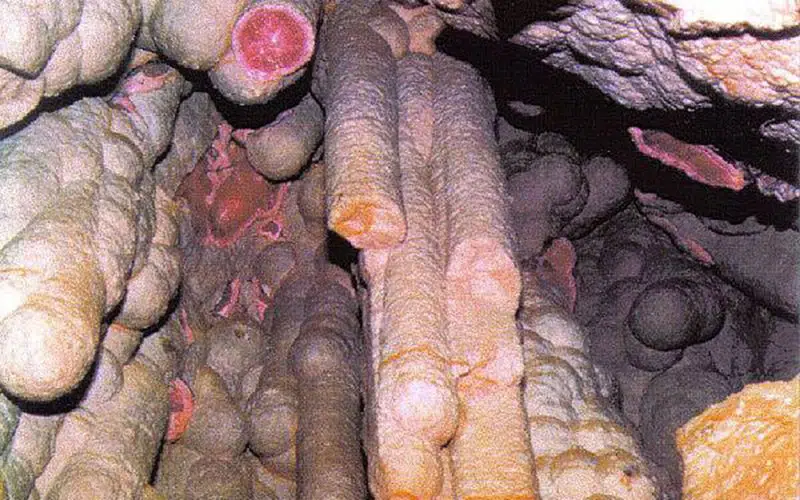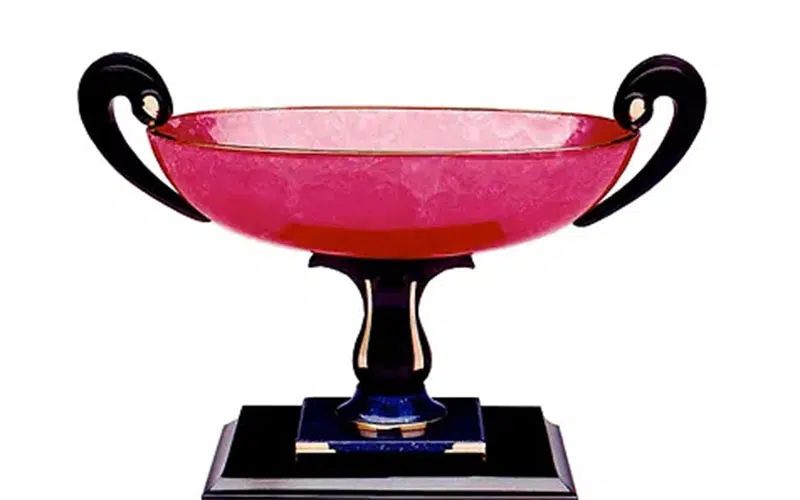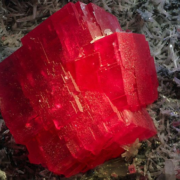All About Colored Stones: Rhodochrosite

Rhodochrosite is a strikingly beautiful mineral known for its distinctive pink to red color, flaunting luscious pink hues like it’s posing for a gemstone magazine, shimmering in shades from bubblegum to raspberry sorbet.
It might be considered the Paris Hilton of crystals: glamorous, attention-seeking, and unapologetic. That’s rhodochrosite! Its colors range from delicate pinks to deep reds, with occasional splashes of yellow and brown – a palette worthy of a colorful artist’s dream.

Rhodochrosite is commonly found with striking pink and white bands, it is a gemstone that has captured the hearts of many gem enthusiasts. This stone, referred to by spiritualists as the “Stone of Love and Balance,” is not only aesthetically pleasing but also carries a rich history and unique properties that make it stand out in the gemstone world.

Underneath it’s pretty façade, rhodochrosite is made up of manganese carbonate, can crystallize in perfect cubic shapes and will steal the show when in matrix. It can also form in delightful stalactites or botryoidal shapes – imagine tiny pink grapes or dripping icicles!
The formation story is dramatic: Imagine hot, mineral-rich fluids seeping into cracks and crevices until it stops and cools down, and voilà – rhodochrosite is born, ready for the spotlight. Forming in the cavities of sedimentary and metamorphic rocks, it is created when manganese is dissolved by ground water and combines with a carbonate material, then drips off the ceiling of caves and crevices deep underground.
Over time, these drips crystallize into layers – creating the beautiful, banded patterns that rhodochrosite is known for. Banded with white calcite and can sometimes containing shades of brown or grey.

Rhodochrosite is like a hidden gem (literally) that forms in hydrothermal veins, alongside silver, lead, and copper ores. It’s like nature’s way of saying, “Here’s a bonus prize for all your hard mining work!”
Rhodochrosite is found in spectacular stalactites, like those in ancient Incan silver mines. Imagine stumbling upon a hidden treasure chest deep in the heart of an a mine in Argentina. What would you find? Gold? Silver? Well, let me introduce you to something even more dazzling: Rhodochrosite, the gemstone that could easily be the crown jewel of an ancient empire!

Other hotspots include South Africa, Peru and Romania, However, the largest and most notable deposits are found in the Sweet Home Mine near Alma, Colorado, where Rhodochrosite was declared the state mineral in 2002.
The finest specimens are in a vibrant red color and are amazing. Transparent faceted material is more rare and highly coveted. For this reason, collectors proactively seek out crystal specimens in matrix and the cubic crystals go fast.

Despite its beauty, rhodochrosite is not commonly used in mainstream jewelry due to its softness and cleavage properties. On the Mohs hardness scale, rhodochrosite scores only a 3.5 to 4. That means it’s softer than many gemstones, so handle it with care! Its perfect cleavage means it can split smoothly along three directions, making it both a jeweler’s delight and a challenge. However, it is a favorite among artisan jewelers and collectors who appreciate its unique qualities and vibrant color. In addition to its use in jewelry, Rhodochrosite is also used in the production of manganese as a significant ore of this metal.
Rhodochrosite isn’t just eye candy; it’s said to be a stone of love and emotional healing. Legend has it that wearing rhodochrosite can open your heart, promote compassion, bring joy, and encourage a positive attitude and creativity. It’s like a hug you can wear!
Treat your rhodochrosite like a princess. Keep it away from harsh chemicals and ultrasonic cleaners. Clean it gently with a soft cloth and mild soap, and store it away from tougher gems to avoid scratches.
In summary, rhodochrosite is a gemstone that is as beautiful as it is fascinating. Its unique formation process, stunning appearance, and rich history make it a gemstone worth studying and appreciating. As we continue our journey into the world of colored stones, let us always remember to appreciate the unique qualities that each gemstone brings to the table.




Leave a Reply
Want to join the discussion?Feel free to contribute!